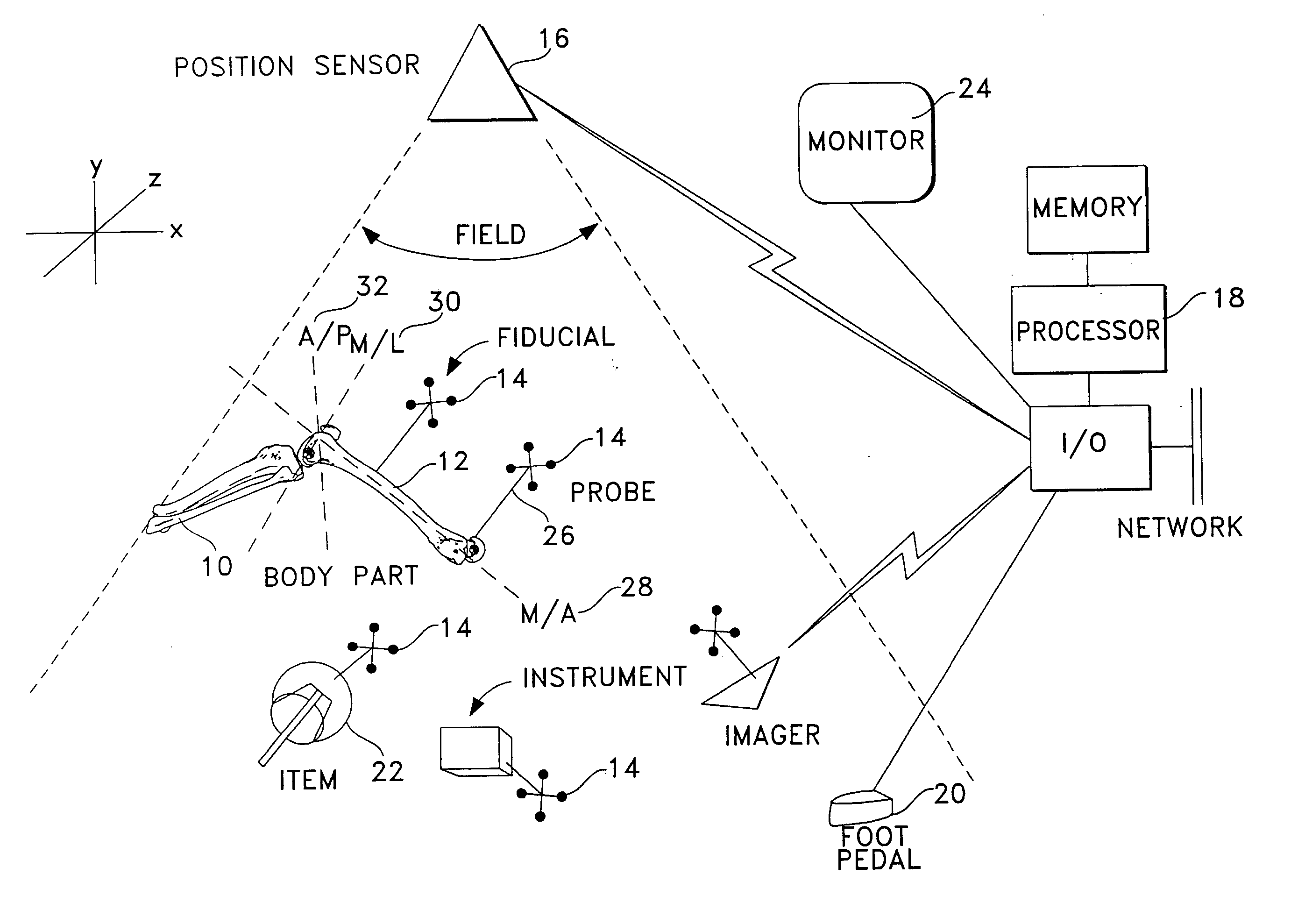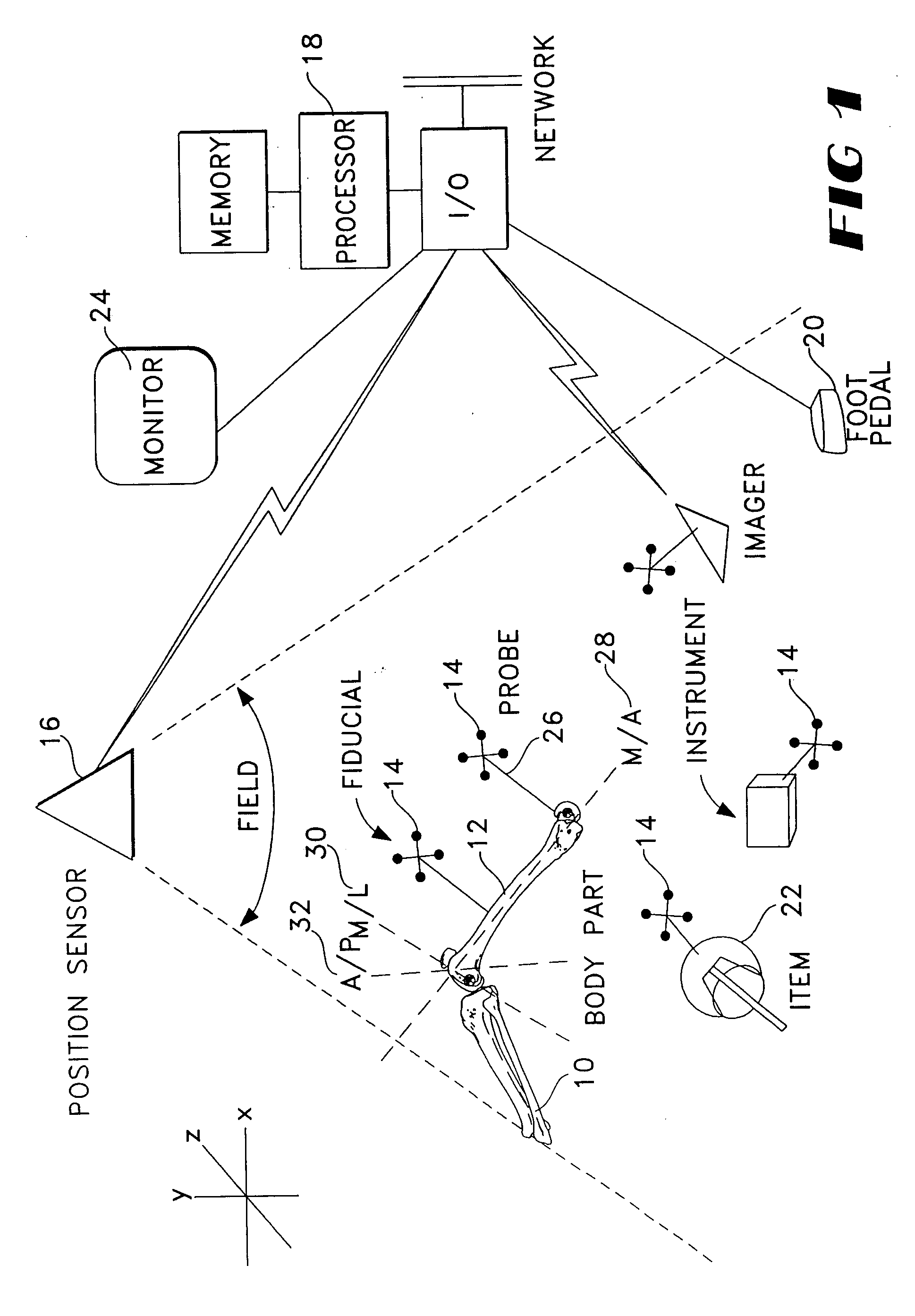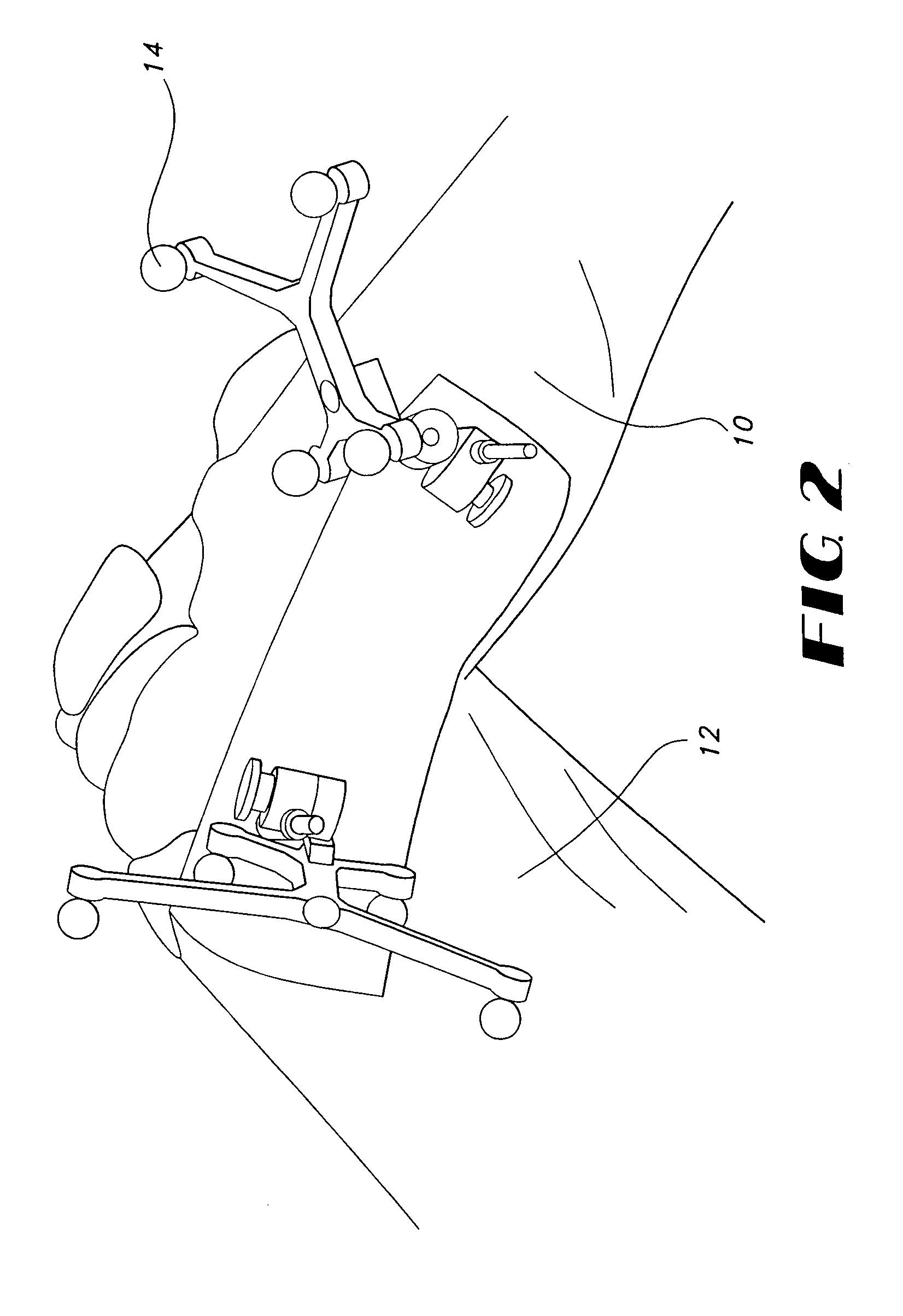Total knee arthroplasty systems and processes
a total knee arthroplasty and process technology, applied in the field of total knee arthroplasty systems and processes, can solve the problems of changing the balance of the knee, increasing the risk of fat embolism and unnecessary blood loss in patients, and the wear and revision of knee implants, so as to improve the performance of the knee joint, and improve the effect of resecting bone accurately
- Summary
- Abstract
- Description
- Claims
- Application Information
AI Technical Summary
Benefits of technology
Problems solved by technology
Method used
Image
Examples
Embodiment Construction
[0089] Systems and processes according to a preferred embodiment of the present invention use computer capacity, including standalone and / or networked, to store data regarding spatial aspects of surgically related items and virtual constructs or references including body parts, implements, instrumentation, trial components, prosthetic components and rotational axes of body parts. Any or all of these may be physically or virtually connected to or incorporate any desired form of mark, structure, component, or other fiducial or reference device or technique which allows position and / or orientation of the item to which it is attached to be sensed and tracked, preferably in three dimensions of translation and three degrees of rotation as well as in time if desired. In the preferred embodiment, such “fidicuals” are reference frames each containing at least three, preferably four, sometimes more, reflective elements such as spheres reflective of lightwave or infrared energy, or active elem...
PUM
 Login to View More
Login to View More Abstract
Description
Claims
Application Information
 Login to View More
Login to View More - R&D
- Intellectual Property
- Life Sciences
- Materials
- Tech Scout
- Unparalleled Data Quality
- Higher Quality Content
- 60% Fewer Hallucinations
Browse by: Latest US Patents, China's latest patents, Technical Efficacy Thesaurus, Application Domain, Technology Topic, Popular Technical Reports.
© 2025 PatSnap. All rights reserved.Legal|Privacy policy|Modern Slavery Act Transparency Statement|Sitemap|About US| Contact US: help@patsnap.com



